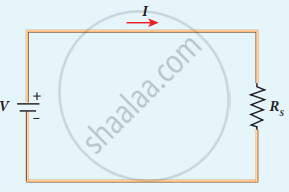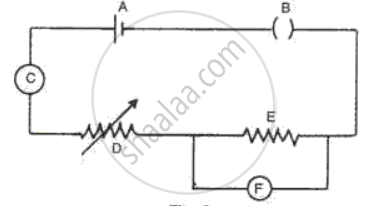Advertisements
Advertisements
Question
Explain the equivalent resistance of a series resistor network.
Solution
When two or more resistors are connected end to end, they are said to be in series. The resistors could be simple resistors or bulbs or heating elements or other devices. Fig. (a) shows three resistors R1, R2 and R3 connected in series.

Three resistors in series
The amount of charge passing through resistor R1 must also pass through resistors R2 and R3 since the charges cannot accumulate anywhere in the circuit. Due to this reason, the current I passing through all the three resistors is the same. According to Ohm’s law, if same current pass through different resistors of different values, then the potential difference across each resistor must be different. Let V1, V2 and V3 be the potential difference (voltage) across each of the resistors R1, R2 and R3 respectively, then we can write V1 = IR1, V2 = IR2 and V3= IR3. But the total voltage V is equal to the sum of voltages across each resistor.
V = V1 + V2 + V3
= IR1 + IR2 + IR3 ….. (1)
V = I(R1 + R2 +R3)
V = I.RS …… (2)
where Rs = R1 + R2 R3 ……. (3)
When several resistances are connected in series, the total or equivalent resistance is the sum of the individual resistances as shown in the following figure.

Equivalent resistance (RS) has the same current
APPEARS IN
RELATED QUESTIONS
What is an Ohmic resistor?
Write the formula of resistivity
How should the two resistances of 2 ohms each be connected so as to produce an equivalent resistance of 1 ohm?
What is the necessary condition for a conductor to obey Ohm’s law?
What length of copper wire of resistivity 1.7 × 10-8 Ω m and radius 1 mm is required so that its resistance is 2Ω?
Fig. represents the circuit used for the verification of Ohm's law. Label the parts from A to F. state the function of each.

The unit of specific resistance is ____________.
The temperature of a conductor is increased. The graph best showing the variation of its resistance is:
A heater of 220 V heats a volume of water m 5 mint time. A heater of 110 V heat in ten second. The resistance of the conductor is
How is electric current related to the potential difference across the terminals of a conductor?
Draw a labelled circuit diagram to verify this relationship.
